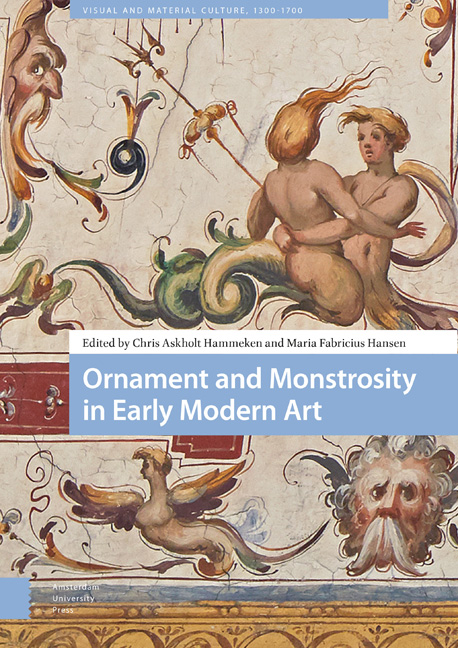6 - Masquing/(Un)Masking: Animation and the Restless Ornament of Fontainebleau
Published online by Cambridge University Press: 21 November 2020
Summary
Abstract
This chapter considers a series of drawings of ornamented costumes produced in mid-sixteenth-century France. In these works, the ornamental stucco framing of the Galerie François Ier at Fontainebleau became elaborate costumes, with the putti, masks, garlands, and tassels now bound to courtiers’ bodies using the same swags, beads, and strapwork that weave their way through the stucco frames. These drawings evidence ornament's transition from the architectonic and fixed structure of the wall, to portable objects and mobile bodies. My chapter traces this movement, paying particular attention to the double role of the mask as both an ornamental motif and an instrument of transformation, revealing a process of animation that blurred the boundaries between the art object and its viewers, and between persons and things.
Keywords: masks, animation, frame, architecture, Fontainebleau, masquerade
For the English translation of his essay on the ‘Parergon’ in The Truth in Painting, Jacques Derrida selected several images that serve, as he writes, to ‘illustrate […] the unstable topos of ornamentality. Or in other words, to “illustrate”, if that is possible, the parergon’.Of the few images chosen, four derive from the artistic production of the School of Fontainebleau and date to the 1540s: two are etchings of cartouches inspired by the stucco ornamental frames of the Galerie François Ier (Ill. 6.1), and the other two are engravings of the cryptoportico in the Jardin des Pins (Ill. 6.2). Claiming ‘a certain illustrative detachment’, Derrida's essay pointedly lacks any reference to the images, leaving the reader/viewer to ponder the parergonal relationship between the text and the chosen images. What we can safely conclude, however, is that, with a world of images to choose from, it was the Fontainebleau prints that resonated with the difficulty inherent in defining ornament. Indeed, these images exemplify one of Derrida's primary critiques of Immanuel Kant's formulation, namely, the assumption that one can distinguish rigorously between the intrinsic and the extrinsic, between what is frame, what is framed, and what is outside the frame.
Derrida is far from the only scholar to recognize that the art and architecture of the French Renaissance provide a rich field for exploring the nature of ornament and the status of the frame. In its prominence and inventiveness, ornament was a dominant mode of representation both at and emerging from Fontainebleau.
- Type
- Chapter
- Information
- Ornament and Monstrosity in Early Modern Art , pp. 177 - 202Publisher: Amsterdam University PressPrint publication year: 2019



